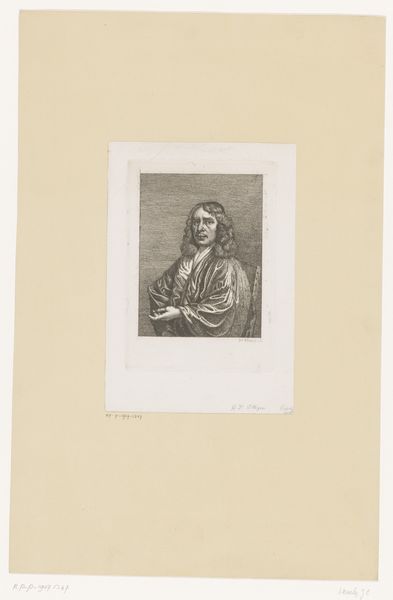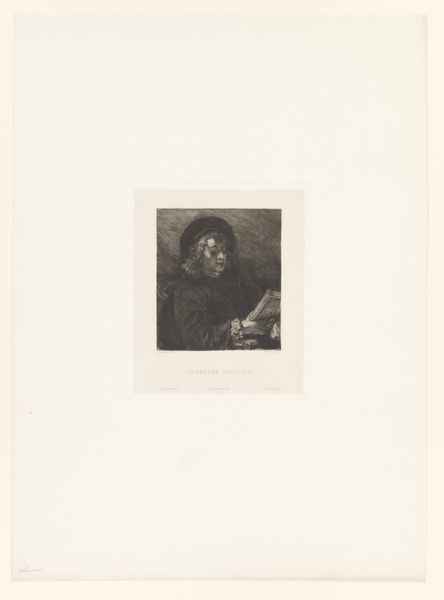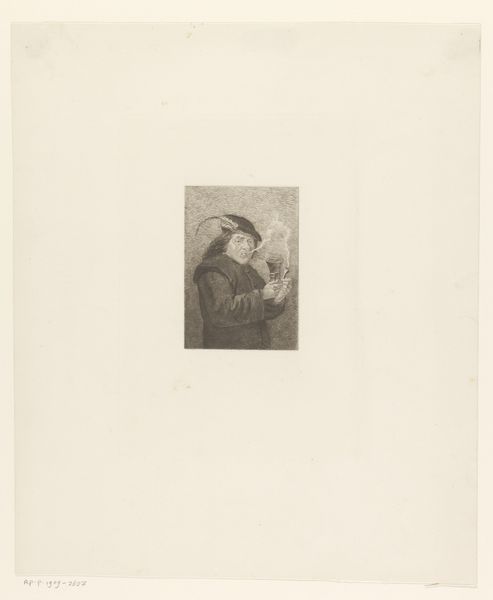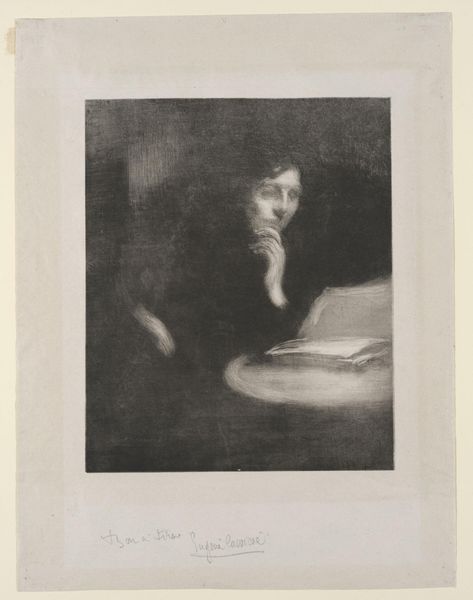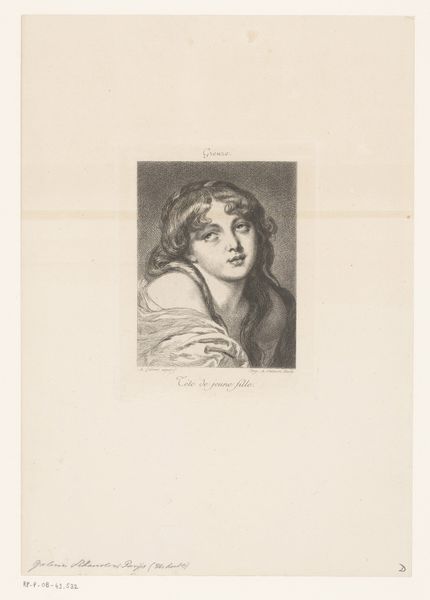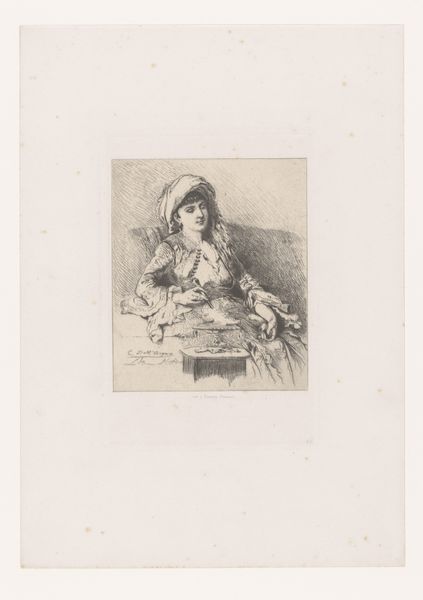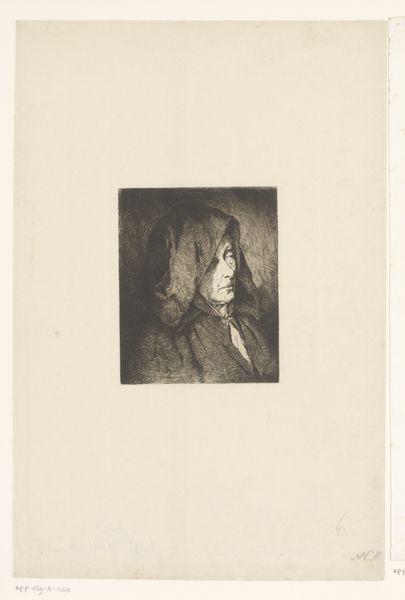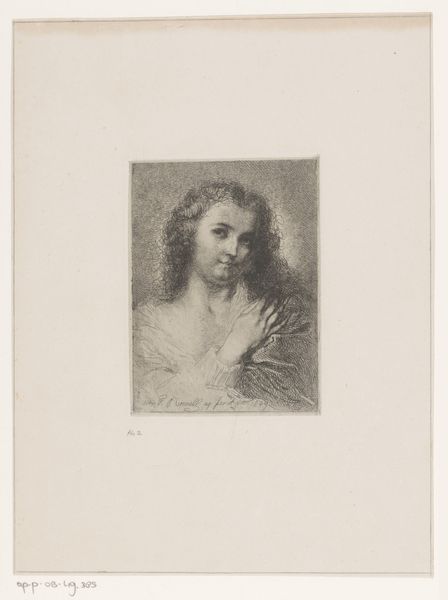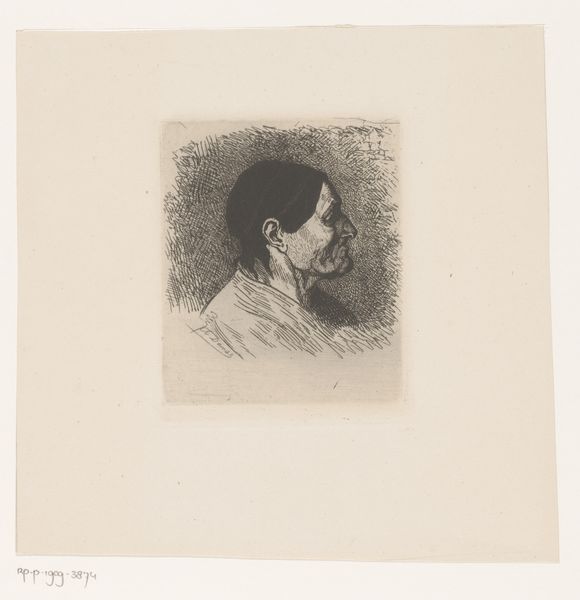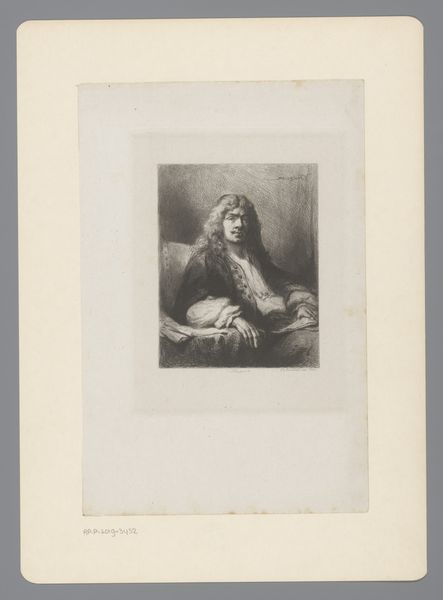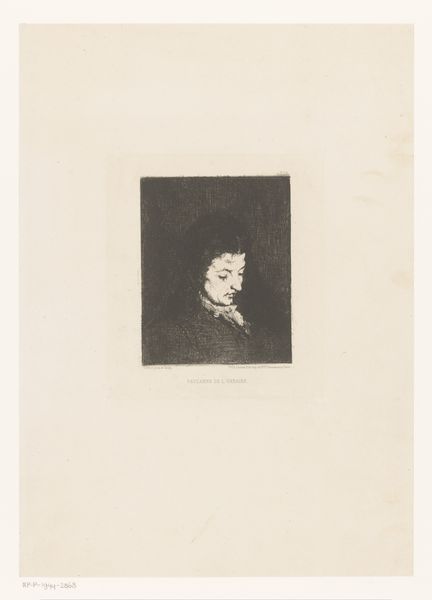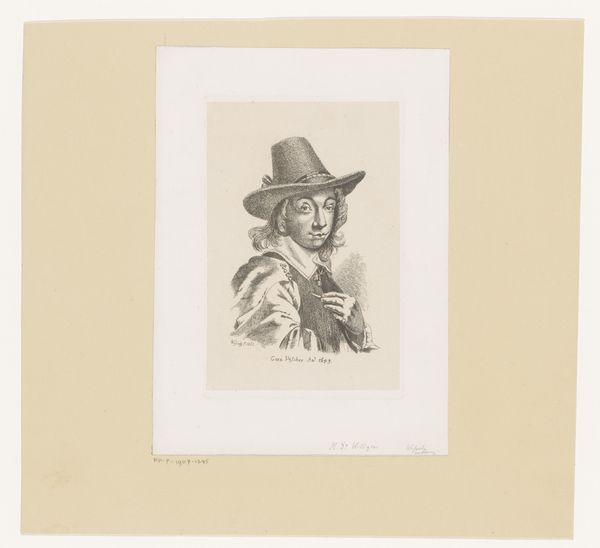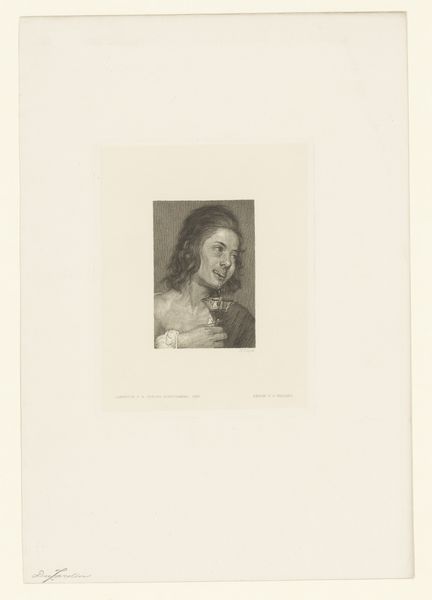
Dimensions: height 128 mm, width 98 mm
Copyright: Rijks Museum: Open Domain
Curator: This is a portrait of René Descartes, created as an engraving in 1805 by Philibert Boutrois, and currently residing here at the Rijksmuseum. Editor: Immediately, it feels so...precise. Crisp, almost severe, despite the softer lines of the Baroque style. Very neat and orderly. Like a man trying to contain his thoughts before they explode out of his head. Curator: Engravings often carry that sense of meticulousness, don't they? It's part of their visual language. It emphasizes rationality, a clarity, fitting given Descartes' legacy. The print medium was quite common for disseminating images of important figures during this time, offering a somewhat affordable way to have his portrait. Editor: And look at his gaze! There is such directness. He's got a steely look about him; like he is thinking several steps ahead, and already won the argument. I get a sense of almost arrogance from him. Does the artist agree, do you think, since this image was rendered long after Descartes passed? Curator: I see it as more a statement of intellectual authority. This engraving, being created long after Descartes’ lifetime, becomes less about simple representation and more about embodying his lasting intellectual contributions. The choice to render him with that intense gaze cements his status as a cornerstone of modern philosophy. The style references baroque portraiture that was typical when he was alive. Editor: A cornerstone, yes, or a lodestone. The piece is literally black and white, and for me there’s an ethical sharpness to the image. Descartes almost dares you to disagree. Are we even meant to like this person? Or simply to acknowledge that "I think, therefore I am," is seared into the foundations of our culture? It feels monumental, in that way. Curator: A lodestone… that’s a great image, considering his impact. There is an almost immediate connection he forged for the rational mind within philosophical discourse that extends to how images communicate too. This image is designed to be widely reproducible and readily understood – in line with that sense of clear rationality he advanced in the early modern era. Editor: This engraving, so meticulous and poised, serves to embody, almost ironically, this intellectual who has been absorbed and somewhat re-imagined. Not that the reality really matters! In my own world I try for clarity, even while embracing mystery, but the man portrayed here seems like a force. I will continue thinking of it all later.
Comments
No comments
Be the first to comment and join the conversation on the ultimate creative platform.

